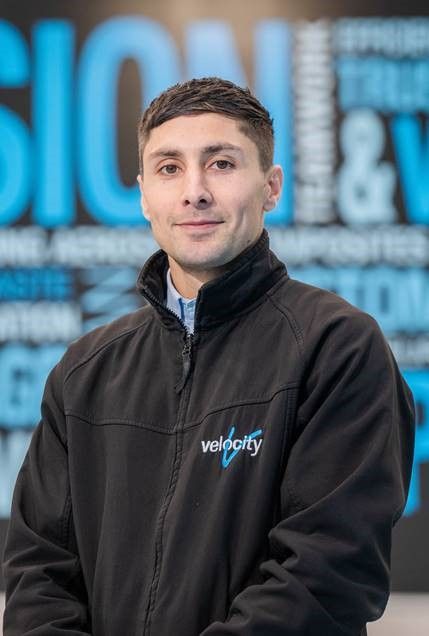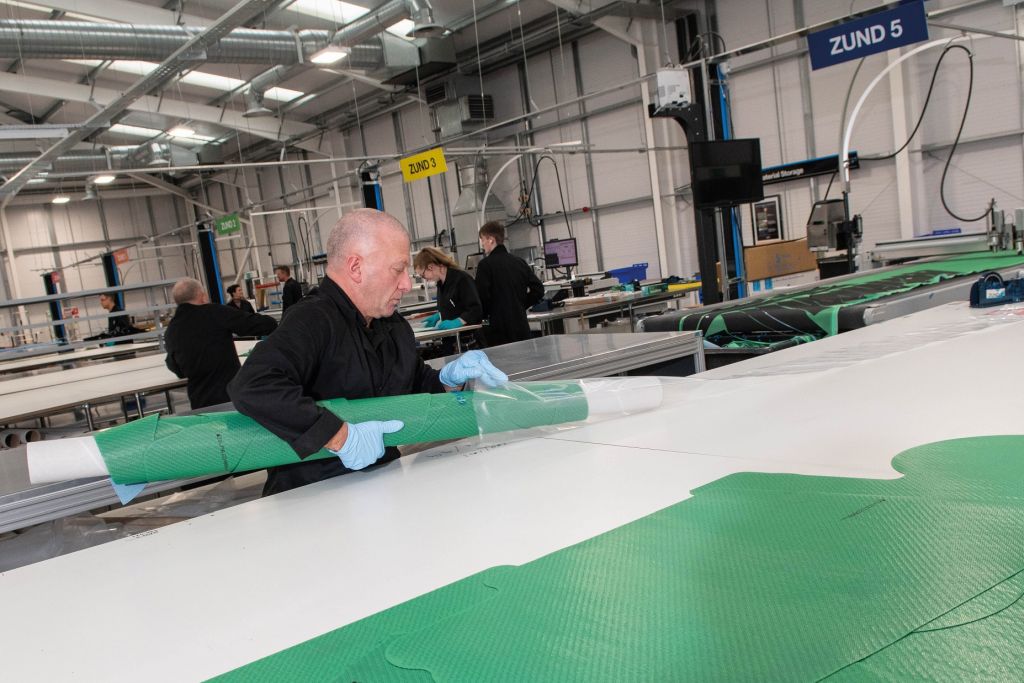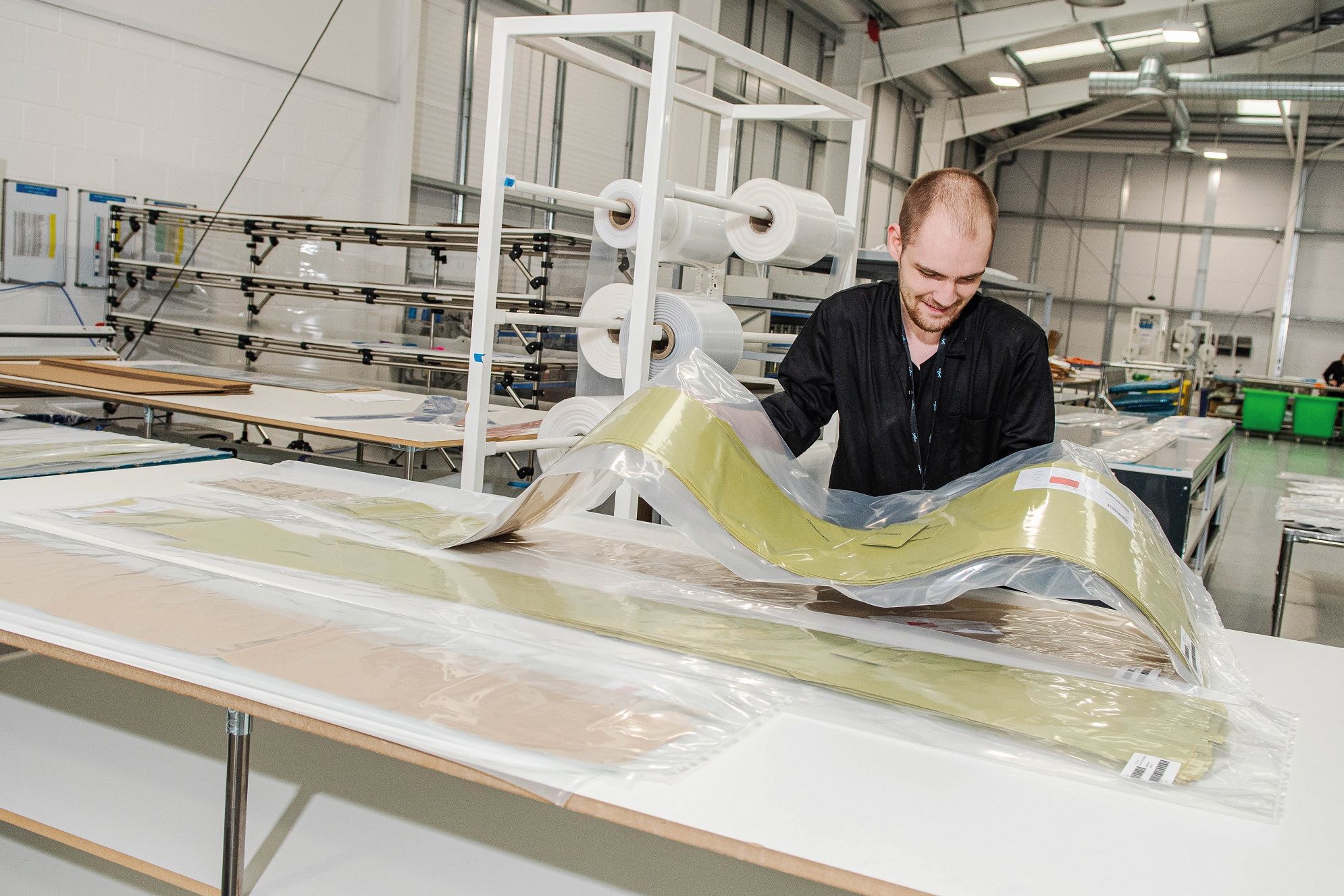CAD/CAM’s composites kitting key role

The reliance on gathering data and using it to drive programmes in the supply chain has never been greater. Emil Khan of Velocity Composites looks at how incorporating an end-to-end CAD/CAM solution helps drive efficiency and optimise engineered solutions for composite manufacturers.
From design to manufactured product, in the aerospace supply chain we want to spend as little downtime and minimise waste in all forms as possible, as efficiency gains from structural and process material kits add value straight to the bottom line.
From the outset, a CAD/CAM program relies on the overriding need for the product demand and product design data to be clean and validated whether the information is provided by our customer or by ourselves.

Engineered kit solutions for process materials may include kits of simple or complex cut shapes with identification marks, 3D nylon welded vacuum bags, 3D stitched breather and bleeder packs, laser cut peel ply, reusable debulk systems and complex sub-assemblies. The need for correct initial 3D data capture is paramount to create a 2D digital drawing of the sub-components that make-up the finished kit products.
In order to match our customer’s tooling, our engineering team can take an existing 2D or 3D drawing, map the tool through our laser scanner or identify simple measurements whilst on-site at our customer to produce a 3D digital version of their tooling in our CAD software, both with and without a component in place.
At all steps of the kit design process, we can digitally template the surface details of our kitted product to a customer tool with high accuracy and minimal time engagement spent by the customer, allowing us to focus on delivering time-savings, improved quality, process robustness and traceability and total cost of ownership efficiencies through the design of the engineered kits, allowing the customer to focus on their day-to-day part manufacturing activities.
At Velocity Composites, we’re also capable of producing a full-scale model of a tool once the shape is digitally mapped. This means we can work in our own facility with all of its capabilities, technology and expertise to make our kit design modifications and increase ‘right first time’ development prior to adoption at the customer.
The model is either 3D printed or created from contoured sections to generate a 3D profile with a full representation of the tool for our internal manufacturing trials. This technique allows for designs and models to be created for customers in Europe and the US, working remotely and round the clock without compromising best practice.
Proprietary technology
The kits designs are templated onto the 3D model to fit, then applied to our digitising process to convert the template into a lay-flat (2D) shape for each kit. Following selection of the optimal process materials to use, we incorporate our Hypernest software to digitally drive our suite of CNC cutting machines and produce cut plies of material which can then also be welded or sewn to form a finished process material kit assembly. These are all made possible through Velocity Composites’ capability to combine proprietary CAM software and in-house developed manufacturing technologies.

We can send the customer a detailed report, with images and video to ensure the proposed kit designs exceed their expectation and for reassurance that the process is proceeding successfully. A final version of the kit is then sent for customer on-site trial and approval, together with an engineering visit, where possible, to confirm our kitted product delivers the targeted time, quality and cost efficiencies for the customer.
Velocity Composites further exploits value from CAD/CAM processes through our material management and kitting services designed for typical high-value structural composite materials with limited operating life.
With the average wastage rate of composite process materials production as high as 50% in some cases, our VRP technology is designed to manage the entire value stream, from customer demand management, raw material management, batch traceability, complex nesting, kit manufacture and kit logistics, with all areas being connected and sharing real-time data to drive maximum efficiency. The customer also has visibility of the process throughout, with our Cloud-based software providing the relevant dashboard data to give confirmation of demand and delivery schedules.
At the start of any structural kitting programme, the initial CAD data we are sent by our customers is often reconfigured by our Hypernest software to ensure correct formatting and the detailed design can be processed by our CNC cutting machines.
This reverse engineering step is necessary to create the correct software language across our process, and is also fully traceable and utilises our Digital Ply Inspection platform to audit our engineering work and ensure all our shape data is fully traceable back to the customer data.
Similarly, our Hypernest software ensures maximum efficiency on the cutting table, by ensuring that maximum material utilisation and minimum material wastage during the production run. This includes much larger and complex nests of shapes, some well over a kilometre in length, where the software identifies opportunities.

Rolls are only picked from frozen storage according to the customer demand and agreed operating principles to preserve their material shelf life. Once issued to our cleanroom, the software further identifies improved operational efficiency due to precise roll-size and required roll change-overs. At Velocity Composites, our total level of operational waste across all of our programmes stands at a fraction of 1% – and we are aiming to get even better.
After these large nests have been processed the shapes need to be sorted into individual kits, taking into account shape-kit multiples and material batch traceability. Our kit collation and sequencing cell is now fully digital, supported by real-time data from other parts of our VRP system.
Our process combines automated visual inspection (AVISoCS) of every ply for unique verification together with pick-by-light ‘smart shelf’ technology for kit collation containing digital functionality to demonstrate and confirm kitting progress to both our operators and VRP system. This is all in place to augment the unbeatable dexterity of people during the manufacturing process and drive efficiency when running our significant length nests with multiple rolls.
As a result, our customers have been able to reduce composite structural material spend by between 10-20% using our processes and systems on a typical programme, whilst outsourcing a non-core business and complex raw material supply chain.
Data-driven processes
Looking at the wider picture, there is a need to look at efficiency gains at every level of the sector, with UK aviation decarbonisation targets set at 15% by 2030, 40% by 2040 and a commitment to reach net zero by 2050, greatly increasing the need for cost efficient lightweight structures.
There is no limit to where we can take this technology, backed up by the real-time data-driven processes which give us and our customers valuable information upon which to make decisions.
Indeed, as we continue to develop and refine our processes for increasing efficiencies on behalf of our customers and the wider supply chains, we believe other industries can benefit from this adaptive, flexible technology.
The automotive, wind energy, sport and leisure industries are already looking at the possible opportunities. In the automotive industry, the parts are generally higher volume and continually changing due to continuous development, so the flexible, kitted solution is well suited and processes themselves are transferable.
From receiving customer information for a project, through to validation of the data and input into CAD, our CAM process works as an integral part of the programme to ensure the finished product meets original requirements with maximum efficiencies and waste savings and minimal input from the customer. Our aim is to receive the data once and then for all parts of our system to utilise it digitally in real-time, maintaining the traceability and process adherence our customers’ demand.













